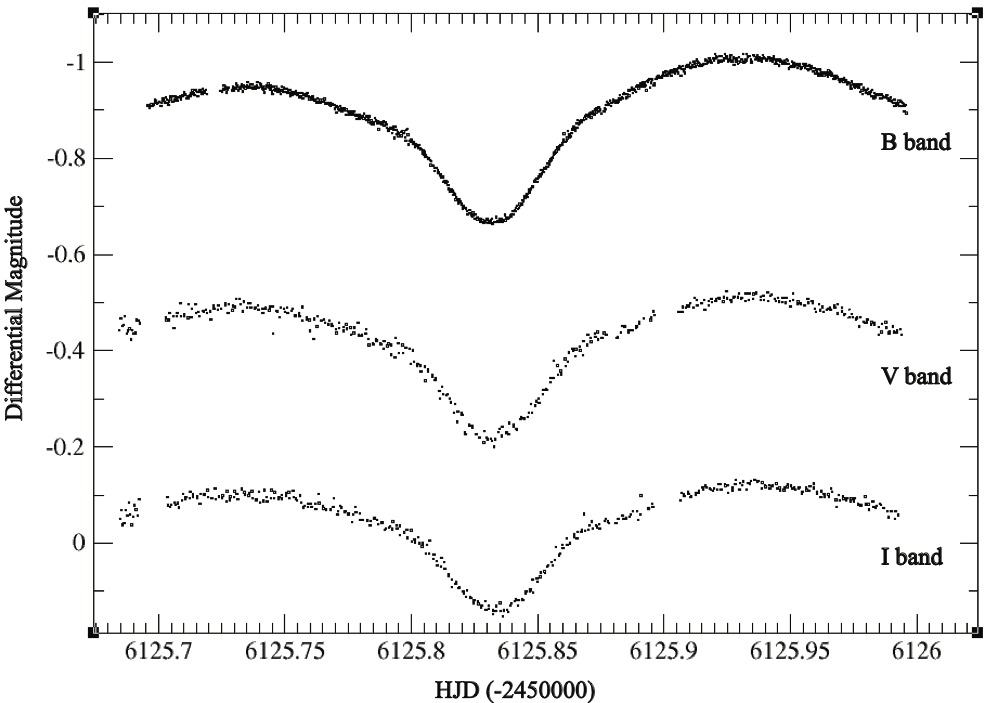
Abstract
Observations and modeling of the eclipsing binary KIC 3557421 were conducted in order to make accurate determinations of the masses and radii of the stars. A long-lived discrepancy exists between the observed radii of low-mass main sequence stars versus their predicted values; theoretical models currently underestimate their radii by up to 15%. It is known, however, that many of these low-mass systems have stars with high rotation velocities, spun up by their companion stars in tight orbits. This may create enhanced stellar activity, and has been suggested as a possible explanation for the observed over-sized stars. KIC 3557421 is a bright (Kp=10.027), short period (P=9.4 hr), double-line spectroscopic binary system showing both primary and secondary eclipses. Both stars are near 1 solar mass, and so are expected to have radii near 1 solar radius. However, the short orbital period and large stellar spin (V sini >100 km ∕ sec) suggest that the stars have been spun up and thus may provide a test of the hypothesis that tidal forces lead to enlarged radii.
UBVRI CCD observations were made at the Mount Laguna Observatory during the 2011 and 2012 summers. The short period of the binary allowed either a primary or secondary eclipse to be measured on any given night. A total of 11 eclipses were obtained.
In order to find the fundamental properties of the binary, the Eclipsing Light Curve code (ELC) is used (Orosz & Hauschildt 2000). Starting with an initial set of stellar parameter estimates, a model light curve and radial velocity curve is produced. Then the parameters are refined by iteration and χ2 minimization. Tabulated stellar intensities are used and the Roche approximation for the stellar shapes. Outside of the eclipses the light curve is not flat, indicating that the stars are tidally distorted and irradiated, which is not unexpected given the short orbital period. Parameters of interest are the stellar radii, temperatures, and masses, orbital period, epoch, and inclination. In addition, small but significant star spots can be present, which are also modeled by ELC.
There is sometimes a difference in brightness between orbital phases 0.25 and 0.75 (see Figure 2). Because this difference is not persistent, it cannot be due to, say, Doppler boosting or any other permanent feature of the system. It suggests that that one of the stars has a star spot. The long term Kepler data provides further evidence for star spots, as the flux level out of eclipse changes much more than the un- certainty in the data (see Figures 4,5).
Preliminary results show that the stellar radii are enlarged compared to single stars, perhaps due to their tidal interaction. This is significant, as the stars are not low mass K or M stars, but G stars near 1 solar mass. Future work includes determing accurate uncertainties, quantifying the level of stellar activity, estimating the metallicity from the spectra, and using stellar evolution isochrone models to determine their ages.
We gratefully acknowledge support from the National Science Foundation as part of the Research Experiences for Undergraduates program at San Diego State University under grant AST-0850564.